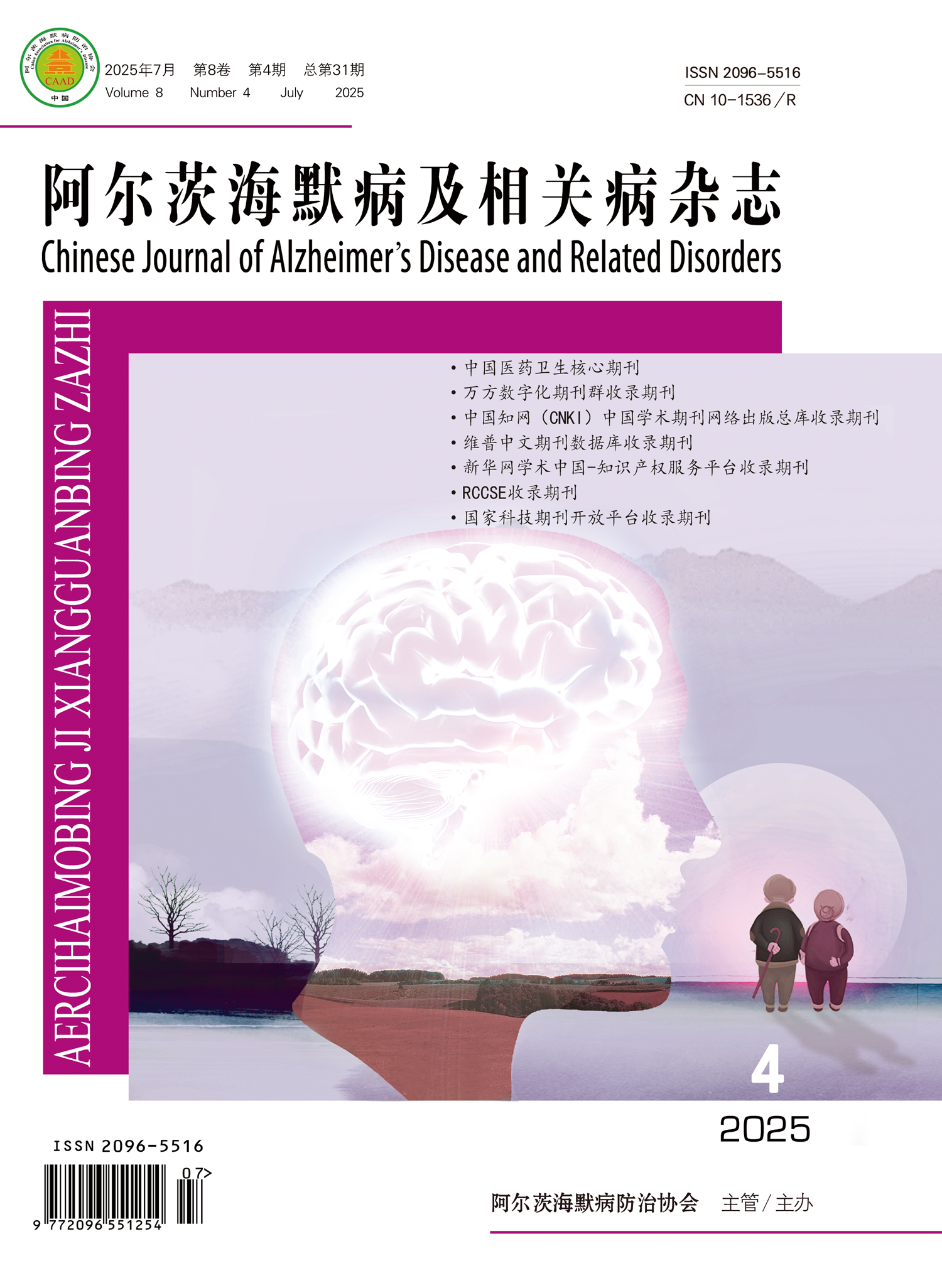Guide and Consensus
Nanbu WANG, Xiaowei MA, Guohui WANG, Hongzheng WANG, Yan XING, Ning ZHU, Liyan QIAO, Jin QIAO, Taojie LIU, Zhi LIU, Xiandong SUN, Xiaoxia DU, Jianping LI, Chenzhong LI, Yu YANG, Zhiquan YANG, Xia HE, Youqiang SONG, Liying ZHANG, Zhiguo ZHANG, Ruiping HU, Shan XU, Qi TANG, Chuanhai CAO, Yao CUI, Shaoyang CUI, Xiaole HAN, Jikang FAN, Chi CAO, Luping SONG, Jun WANG, Profssional Branch of the China Association for Alzheimer’s Disease Cognitive Rehabilitation
To better address the severe challenges of Alzheimer's disease (AD) prevention and control in China, the national government has published the National Action Plan for Addressing the elderly people with dementia. In order to accelerate the achievement of its core objectives, the Chinese Expert Consensus on Multidisciplinary Rehabilitation Interventions for Alzheimer's Disease has been formulated by integrating multidisciplinary expert opinions and evidence-based findings, using the Delphi method combined with GRADE evidence grading. This consensus advocates a “hospital-community-family” tripartite collaborative management model to standardize systematic and multidimensional approaches for the prevention, treatment, rehabilitation, and care of AD.This consensus deliver evidence-based guidance for tripartite stakeholders (healthcare providers, community networks, and family care systems) to operationalize healthy aging strategies through standardized AD management protocols.. For preventive strategies, AD risk factors are categorized into low-, medium-, and high-risk tiers to guide the formulation of personalized prevention and intervention strategies. For therapeutic management, treatment regimens are stratified by AD clinical stages (mild/moderate/severe), incorporating Western pharmacotherapy, traditional Chinese medicine and neuromodulation techniques. Rehabilitation requires individualized protocols based on multidimensional assessments encompassing functional disability evaluations, personal preferences, and familial support systems, with active rehabilitation prioritized during early/mid-stages and passive interventions dominating advanced AD care. Rehabilitation measures include cognitive therapies (including cognitive training, cognitive stimulation, and cognitive rehabilitation), lifestyle modifications (featuring nutritional guidance and exercise regimens that combine aerobic, strength, and mind-body training), humanistic approaches (such as reminiscence and immersive technologies), art-based therapies (applying music, dance, and visual arts), nature-assisted therapies (through horticultural and animal-assisted interaction), as well as sensory modulation techniques (utilizing light therapy and aromatherapy). For moderate-to-advanced stage AD patients presenting with behavioral and psychological symptoms of dementia or profound cognitive-functional decline, care strategies should implement person-centered care frameworks to preserve self-identity, deliver integrated palliative support, and manage comorbidities through multidisciplinary coordination.
